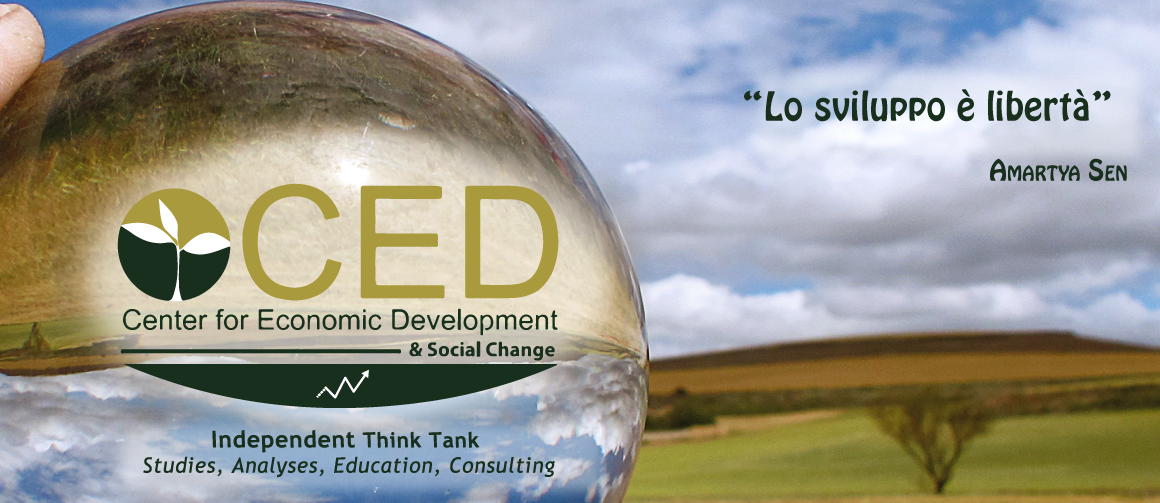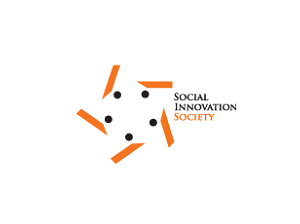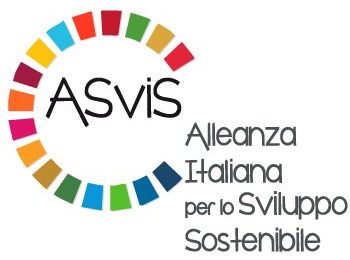
image from “The United Nations Sustainable Development Summit: 17 Goals to Transform Our World”
https://vimeo.com/151435077
*This is a short summary of a much longer work, which can be downloaded from Revista Internacional de Cooperación y Desarrollo USB Cartagena (Colombia) – Red Iberoamericana Académica de Cooperación Internacional – RIACI- Cooperation and Development Network -CDA:
http://revistas.usb.edu.co/index.php/Cooperacion/article/view/2778/2426″
1- Introduction
SDG 17 deals with Global partnership and it is the most important of the new Sustainable Development Goals. Only by making global partnership effective we can hope to pursue the goals and their 169 targets, this is the topic of section 6. The post-2015 process must take into account of the actual historical and economic environment in which it will take place. Section 3 examines the two main events which have characterized the international economy during the last 30 years:
- the economic growth in Asia;
- the rise of international finance.
Both facts have re-shaped the international economic environment in which the new goals will be pursued. Section 4 focuses on the way in which international financial markets operate and describe the risks of financial mercantilism. Section 5 discusses the ways in which developing countries could receive private funds and avoid major crises. I suggest a wider use of GDP indexed bonds. Section 6 contends that a general principle should guide the post-2015 dialogue: the re-balancing of the negotiating powers in favour of developing countries. I also highlight three steps to make global partnership work.
2- Global partnership: empowerment and ownership
The new SDGs encapsulate the current conception of development and its evolution since the nineteen-fifties. In the beginning we had economic growth, now we have a holistic view of development. The broadening of the notion of development has benefited some well known contribution; from the Bruntland Report of 1987 to the 1990 Human Development Index, to the 2000 Millenium Development Goals. Development is now conceived as a multi-dimensional process; I would say: Development is a process of empowerment. Of course this process takes into specific social and economic structures which depend upon the given historical conditions.
Several High Level For a, from Rome 2003 to Busan 2011 and to Mexico City 2014 have contributed to the evolution of the view of international cooperation from aid effectiveness to global partnership. All the major UN documents in preparation of the SDGs focus on Global Partnership and the last goal, number 17, reads: strengthen the means of implementation and revitalize the global partnership for sustainable development. In 2000 MDG number 8 already said: develop a global partnership for development. I would add that as development is empowerment so global partnership requires country ownership. In his 1998 paper on the post-Washington Consensus Stiglitz writes that developing countries should be in the ‘driver seats’ (see Stiglitz, J.E. (1998).
3- Facts on the ground, Asia
The twenty first century will be the century of Asia. Thanks to high growth rates many Asian countries which in the sixties and seventies were in the Low Income group are now classified as either high income or upper middle income. MDG1 on poverty reduction will be achieved thanks to China’s economic growth. The emerging economies are important ‘new donors’ and they are also new trading partners.
However, since 2008 High Income Economies have shown very low growth rates; the so called ‘secular stagnation’ debate (see Baldwin R. and Teulings C. 2014) investigates the reasons of the slowing down of economic growth. Most of the blame is put on the ageing population and on the excess of savings, the ‘savings glut’. I think this is also a crisis of overcapacity; the markets of many products seem to be saturated and there is a lack of
effective demand. Moreover the last thirty years have seen a process of concentration of both wealth and income (see Piketty 2013).
Whatever the reason for the secular stagnation how can developing countries achieve decent growth rates? How can the Least-Developed Countries reach the seven per cent growth rate per annum till 2030, which is target 1 in SDG 8? Developing countries need policy space and special and differential treatment in order to sustain competition on international markets. UNCTAD 2014 offers numerous examples about how to support Low and Lower
Middle Income Countries in their gradual attempt to become more competitive on international markets. Trade facilitations are necessary and the same is true for trade regulations; this is part of the general principle of re-balancing of the negotiating powers I have highlighted in section 1.
4. Financial Mercantilism
In 1985 the overall value of financial derivatives was slightly more than 1 trillion dollars, in 2007 just before the sub-prime crisis this value overtook 600 trillion. In 2015, eight years into the crisis, the notional amount of derivatives is close to 700 trillion dollars, nine times the world GDP.
The abundance of savings and financial liberalization have not prevented financial crises. International financial markets are dominated by systemic risk and by short-termism: the, also in the case of bonds, which in principle long-term Financial operators must continuously buy and sell financial products in search for capital gains: “buying cheap and selling dear”, the same type of behaviour of seventeenth century mercantilists. The old
mercantilists used to move goods in space and time, modern international finance does not need to do that. Derivatives are pure contract, they are promises to buy and to sell which can make you either rich or go bust; international finance is a zero-sum game.
Ninety per cent of the derivative markets are Over-the-Counter, OTC, which means that they are neither regulated nor supervised; it is hard to know who owes what to whom. Most of the times information is very limited and vague. Moreover there is a growing power of a small number of large investment banks, which can influence the markets and can exert pressure on governments. In 1776 Adam Smith attacked the big merchant companies
precisely because they could manipulate national governments. We have entered a period of Financial Mercantilism.
5. Financing for Development
With so many goals the means of implementation represent a major challenge. The July 2015 Addis Ababa Conference has provided very interesting and useful indications (see UNAAAA 2015). Since the year 2000 new types of financial flows are playing a major role, notably Foreign Direct Investments and Remittances: both types of flows are much larger than Official Aid. Portfolio investments too are flowing to developing countries; even countries in Sub-Saharan Africa are now issuing bonds on international markets. Low interest rates in OECD economies favour the so called carry trade and the search for high yields in emerging and developing countries.
All this looks good for developing countries: funds are available. However in Development Finance the type of financing is more important than the overall amount of funds; financing for development should try to avoid the boom and bust cycles of the eighties and nineties.
During the last few years many developing countries in Sub-Saharan Africa have issued bonds (see Tyson 2015); the money is there let us try to get it. Low and Lower Middle Income countries should be quite careful in issuing bonds and they should consider GDP indexed bonds. This type of bonds have an element of risk-sharing and can reduce the risk of default in case of adverse economic shocks.
Development is a long-term process, so should development funds be. Development finance should have separate markets and separate operators different from the private international ones.
A similar separation between commercial and investment banks was introduced in 1933 by the Glass-Steagall act, I order to try to prevent future crises, but in 1999 it has been repealed by the American Congress. Following the financial crisis of 2007-2008 the Dodd–Frank Wall Street Reform and Consumer Protection Act of July 2010 has introduced many controls and regulations, but it has not separated commercial and investment banking activities. The closer that we come to this separation is with the so called Volcker rule, which has come into effect on July the 21st 2015.
Financing for development needs specialized markets and dedicated financial tools with really long-term commitments; they could help Low and Lower Middle Income countries in their process of graduation from an entirely concessional finance.
I am not optimistic about the possibility to achieve this separation.
6. SDG 17, last but not least
In the SDGs there are a lot of goals and targets, perhaps too many. It is obvious that the process of implementation of the SDGs requires more dialogue and more negotiations; these negotiations a new will be the real test of global partnership. SDG 17 includes 19 targets, which are classified into four groups and 3 systemic issues; the topics are: finance, technology, capacity building, trade, coherence, multi-stakehoder partnership, data. An enormous task.
I have re-classified the 17 goals and the 169 targets into four clusters: Human Development People, Environment Planet, Economics, Financing, Social and Economic Structures and Global Partnership, see the table 1 below (goals and targets in grey belong to two different
clusters).

Table 1. The SDGs and their targets in four clusters
From table 1 it emerges that:
- most goals and targets are heavily interconnected;
- many of the targets included in the first sixteen goals have to do with negotiations and require a dialogue among all stakeholders, this is why I put them in the partnership cluster.
Three steps are necessary in order to have a credible global partnership for development.
Step 1: country ownership; this implies that each country should identify its priority goals and targets. No developing country will be able to move along all the targets. The September Resolution by the General Assembly reads: “Each government will also decide how these aspirational and global targets should be incorporated in national planning processes” (UN 2015, p. 13, point 55). The real issue is that partners should accept the country priorities. Not so easy.
Step 2: there should be a trilateral dialogue between the old and the ‘new donors’ and the developing countries.
First, Old and New donors should agree on the various aid effectiveness criteria, on coherence between trade and aid policies, on coordination, on alignment etc.
Second, developing countries need more policy space both in trade and in finance. Special and Differential Treatment is instrumental to try to re-balance the disadvantaged economic conditions, but also the negotiating capacities of the different countries and stakeholders.
When there are huge asymmetries because parties are very much different not only in terms of resources but also in terms of administrative capacities the re-balancing of these powers should help to achieve a fairer game. This might require some restrictions on the most powerful actors and some additional support for the weaker parties. Figure 1 describes this process.

Figure 1
Step 3: an effective development dialogue with more balanced powers will require major improvements in the institutional and administrative capacities of developing countries.
Conclusions
Two final comments.
First, development is a process of empowerment which does not take place in the vacuum, but must take into account the historically specific social and economic structures. This environment can be either an opportunity or more likely a constraint. All the goals but in particular those in the third cluster imply major changes in the way in which important economic structures hamper sustainable development. This is also partly true of Goal 12 on the promotion of responsible Consumption and Production patterns.
Development as empowerment is a dialectical relationship between people, human beings, and the structures in which they live.
Second, SDG 16 reads: promote peaceful and inclusive societies for sustainable development, provide access to justice for all and build effective, accountable and inclusive institutions at all levels.
New societies with new institutions? More negotiations and more dialogue are in front of us and they will extend well beyond 2030.
The last two SDGs are the more challenging ones. The above three steps are not very charming, but I suspect they are all extremely necessary in order to undertake the path of sustainable development.
References
Baldwin R. and Teulings C. (2014), Secular Stagnation: Facts, Causes, and Cures, A Vox.org/CEPR eBook.
UN (1987), World Commission on Environment and Development, Our Common Future, (also known as Bruntland Report), Oxford University Press, Oxford.
Piketty T. (2013), Capital in the Twenty-First Century, Belknap Press 2014, Cambridge, MA.
Stiglitz, J.E. (1998), More Instruments and Broader Goals: Moving Toward the Post- Washington Consensus, WIDER Annual Lecture, Helsinki, January.
UN-AAAA (2015), Addis Ababa Action Agenda of the Third International Conference on Financing for Development, 13-16 July, endorsed by the UN-GA on the 27 of July.
UNCTAD (2014), Trade and Development Report, Geneva.
UN (2015), Transforming our world: the 2030 Agenda for Sustainable Development, 25-27 September. http://www.un.org/ga/search/view_doc.asp?symbol=A/70/L.1&Lang=E, retrieved October 7, 2015.









